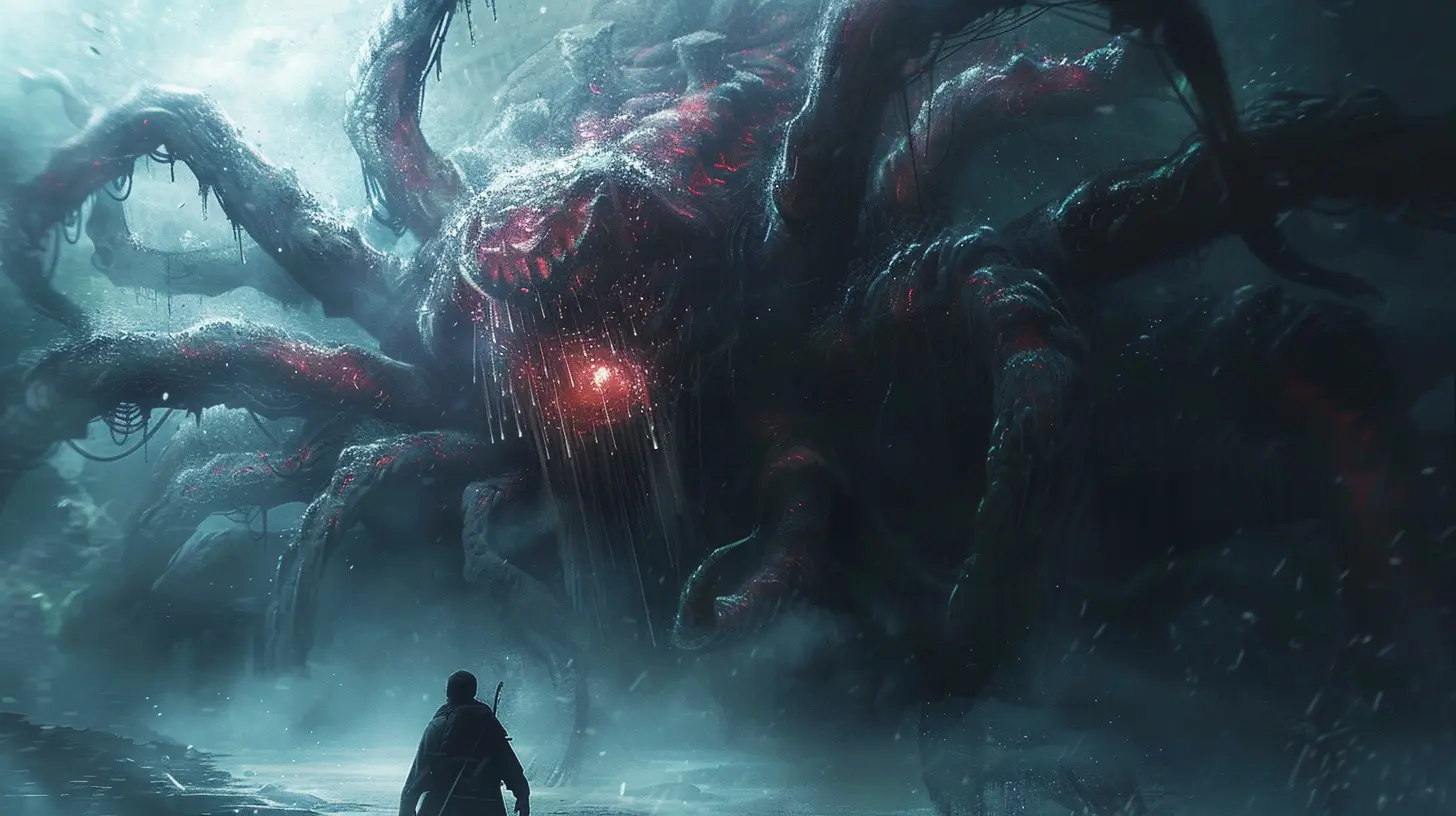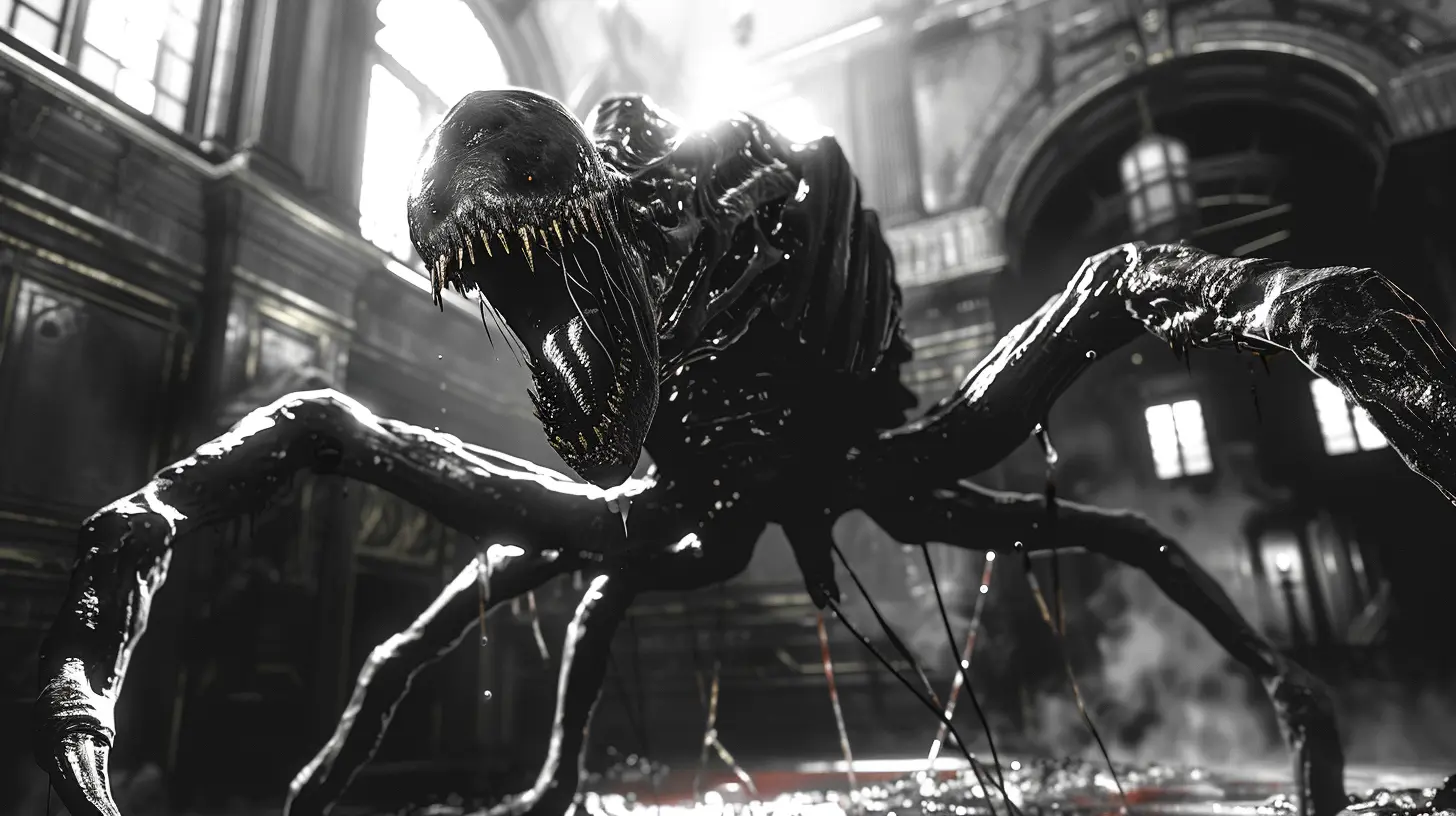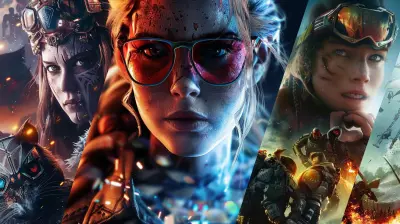Unseen Foes: Horror Games Where You Don’t See the Monster
7 November 2025
Horror is rarely just about the jumpscares. Sure, a sudden loud noise or a grotesque creature lunging at you can make your heart leap out of your chest—but real fear? Real fear lingers. It creeps in quietly, stalking the edges of your vision, whispering threats you can’t quite hear. And sometimes, the most terrifying monsters… are the ones you never lay eyes on.
Welcome to the shadowy domain of horror games where the monster stays hidden. These games don’t rely on blood-soaked visuals or gory close-ups. Instead, they use silence, darkness, sound cues, and your own imagination to crank up the tension. You rarely—if ever—see the enemy. And that’s exactly what makes it so bone-chilling.
If you're a fan of psychological terror, ambient dread, and the kind of suspense that makes you afraid to turn around, this one’s for you.

Why Do Hidden Monsters Scare Us More?
Think about the last time you jolted at a loud thud in the middle of the night. Your brain raced. Was it just the cat? Or something worse? You didn’t see anything. But you felt a presence. That’s where the fear lives—in the unknown.Horror games that keep the monster out of sight understand this. They let your imagination do all the heavy lifting. And let's be honest, your imagination typically conjures up way worse terrors than any developer could ever animate.
These games masterfully use sound, camera angles, lighting (or lack thereof), and narrative tension to build fear. The fear of anticipation. The fear of the almost. And the creeping dread that what you don’t see might just be right behind you.
So, let’s dive into the darkness and talk about some of the best horror games where the monster remains unseen.
🎮 1. Amnesia: The Dark Descent – Fear Itself Is the Enemy
You knew this would be here, didn’t you?When Amnesia: The Dark Descent dropped in 2010, it redefined horror gaming. Not because of what you fought—but because of what you didn’t.
You play as Daniel, wandering through a pitch-black castle, battling not physical beasts but your own sanity. Oh, and there's something roaming the halls—you hear it, you feel it, sometimes you catch a horrible glimpse—but staring directly at it? That’ll drive you mad.
No weapons. No fighting. Just hiding in the dark and trying to stay sane.
The real terror of Amnesia isn’t the monster. It’s the idea that you’re never safe. And when you finally hear those dragging footsteps or guttural moans from behind the wall, you realize—seeing the creature would almost be a relief.
👁 2. SOMA – Existential Dread Wrapped in Digital Skin
From the same minds behind Amnesia, SOMA trades haunted castles for the cold, abandoned corridors of an underwater research facility.But don't let the sci-fi twist fool you—SOMA is pure dread.
True, there are “monsters.” But what really unsettles are the philosophical questions. What is consciousness? What does it mean to be human? At what point does a machine become a person?
The enemies here aren’t just physical threats. They're twisted by their own existential confusion. And again, you’re not fighting. You’re hiding. Sneaking. Listening for mechanical groans or distant metallic thuds.
When the monster does appear, it's distorted. Blurry. Your vision shakes. The game almost won’t let you look at them. And that alone makes you fear what your brain might piece together.
📻 3. Silent Hill – The Early Games and Their Psychological Weight
Before Silent Hill turned into a Pyramid Head parade, the earlier entries (especially Silent Hill 2) relied heavily on what you didn’t see.It’s all about atmosphere. Fog that blankets the town. Shadows that move ever so slightly. Radio static crackling when something might be near.
Yeah, you do fight actual enemies eventually, but Silent Hill’s biggest terror is psychological. Guilt. Grief. Trauma. The monsters are often allegories—representations of the protagonist's twisted mind.
So while you may see a monster, you're never quite sure what you're actually looking at. And that ambiguity? That's horror gold.
💀 4. The Blair Witch – Don't Look, Just Listen
Inspired by the found-footage film that gave us all motion sickness and trust issues with the woods, Blair Witch (2019) puts you in the shoes of a former cop searching for a lost boy in—yep—the Black Hills Forest.The catch? You're not really supposed to look at the monster.
Your camera picks up strange signals. Your flashlight flickers. Your dog (best boi Bullet) snarls randomly. The threats are there. All around you. But rarely visible.
Instead, the game uses sound and psychological tricks to mess with your mind. Trees creak. Whispers float through the dry leaves. And sometimes, your screen warps and twists—not because something is attacking, but because it’s watching.
The terror here isn’t just the monster. It’s the feeling that you’re always a few steps away from losing reality.
🔦 5. Oxenfree – Ghosts in the Radio Waves
A side-scrolling supernatural thriller with a pastel-colored art style might not sound that spooky, but Oxenfree will mess with your head.You play as a teenager who, along with friends, accidentally opens a ghostly rift while on a remote island. These aren’t your chain-rattling, bedsheet ghosts either. These are malevolent, time-breaking, semi-omnipotent forces that torment you through glitches, repeating time loops, and distorted radio signals.
And the kicker? You never see them. You only hear them.
They speak through your radio, hijack conversations, and literally possess time itself. You’re not running from a monster—you’re trying to maintain your grip on reality.
Oxenfree proves that the most terrifying entities don’t need a face. Just a voice, a presence, and a willingness to bend the rules of the universe.
🕯 6. A Machine For Pigs – A Descent into the Industrial Abyss
Often overshadowed by its predecessor, Amnesia: A Machine for Pigs ditches sanity meters but doubles down on environmental dread.You wake up in a Victorian mansion as Mandus, a man plagued by visions and whispers. There’s a machine beneath your feet. A machine that hums. Screams. Whimpers.
And while you do encounter pig-like "creatures," they are often hidden—a blur behind a corner, a sound two corridors over, a quick snort in the dark.
This game doesn’t want you focusing on the monsters. It wants you to fear what they represent. Industry gone wrong. Humanity lost. Children sacrificed to the machine.
You feel the presence of evil more than you ever confront it directly. And sometimes, that’s far worse.
🪞 7. Layers of Fear – Art, Madness, and the Unseen
You’re an artist. A brilliant one. But also deeply disturbed.Layers of Fear traps you inside a Victorian mansion, twisting reality as you try to complete a “masterpiece.” Doors vanish. Hallways rotate. Paintings scream. And something follows you from room to room.
The game never throws a tangible monster at you. Instead, it uses your own descent into madness to scare you. It loops rooms, changes perspectives, and delivers whispers that worm their way into your brain.
You’ll swear you saw something move, a shadow flicker—but when you turn, there’s nothing. The pacing is slow, deliberate, like a heartbeat waiting to spike.
Here, your mind is the monster. And it’s happy to play tricks on you.
🪙 The Psychology Behind The Fear
Let’s get a little geeky for a second.Studies show that anticipation creates more stress and fear than the threat itself. Our brains are wired to fill in gaps, and when we don’t know what we’re up against, we assume the worst.
Horror games with unseen foes understand that you’re the best scare engine out there. They lay the groundwork—creaking floorboards, flickering lights, eerie silence—and let you do the rest.
It’s like being afraid of the dark—not because of any specific threat, but because you don’t know what might be hiding in it. That’s the secret sauce, and these games pour it on thick.
🧠 Imagination: The True Final Boss
Let’s be real. The second a monster is shown in full HD with ragdoll physics and predictable behavior patterns, it loses its bite.But the monsters you never see?
They slither into your dreams. They leave you flicking the light on for just a second longer. They make you turn your volume down—not because of loud noises, but because you can’t stand hearing what might be next.
The greatest horror developers know that when it comes to fear, less is more. Obscure the threat. Let paranoia thrive. Let the player’s mind fill in the horrific blanks.
Invisibility isn't just a gameplay trick. It's a narrative weapon.
👾 Honorable Mentions — Because There’s Always More in the Shadows
The world of subtle, unseen horror is vast, but here are a few more titles you should check out if you're itching for that dread-soaked thrill:- Stories Untold – A text-based retro horror experience that's way more disturbing than you'd expect.
- Darkwood – Top-down horror that manages to unsettle with every creak and shadow.
- Neverending Nightmares – A surreal descent into mental illness and suppressed trauma.
- The Forest (Early Game) – Before the mutants show up, it's all about what you think is in the woods.
🚪Final Thoughts: Face the Fear You Can’t See
In a world flooded with jump scares and grotesque enemy designs, horror games that let the monster remain hidden are a breath of lethal, fresh air.They don’t need to show you what's coming. In fact, they’d rather you be left in the dark.
Because when the lights flicker, footsteps echo, and your character whispers, "Did you hear that?"—you know something’s there.
You just haven't seen it yet.
And maybe… you never will.
all images in this post were generated using AI tools
Category:
Horror GamesAuthor:

Greyson McVeigh
Discussion
rate this article
1 comments
Jane Porter
Fear the unknown, conquer your fears!
November 30, 2025 at 5:41 PM

Greyson McVeigh
Absolutely! Embracing the unknown can lead to thrilling discoveries and deeper courage.


